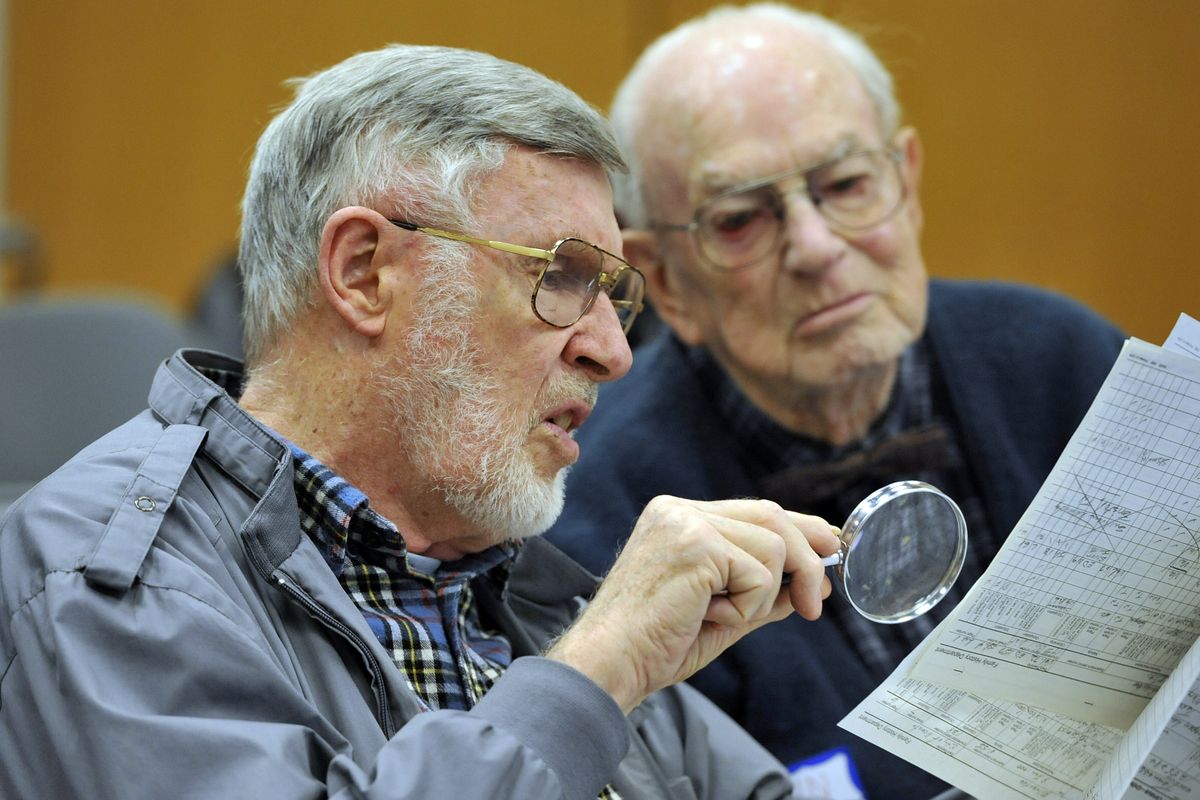Poring over ’40 census fills in family portraits

A group of genealogy buffs traveled back in time Saturday.
They gathered at the Spokane Public Library downtown to mine newly released 1940 census data. After a mandatory 72-year waiting period, which is in place to protect privacy, the records were released by the U.S. National Archives on Monday and put online through a partnership with Archives.com.
Those in attendance Saturday were among millions of Americans digging into the records to see what information about their ancestors – or themselves – they can uncover.
“You never know what you’re going to find,” said Bette Topp, a board member of the Eastern Washington Genealogical Society, which provided volunteers to help with the searches. “You just never know.”
Some looked up their parents, grandparents and great-grandparents. Many were even able to find themselves.
“Genealogy is the most fascinating thing I’ve ever done in my life,” Topp said, adding, “You have to love history. That’s the prerequisite. If you don’t love history, you’re wasting your time.”
Just like today, the purpose of the census in 1940 was to give a snapshot of the entire American population on a given day. But the questions have changed, and the questions in the April 1940 census reflected the economic upheaval of the Great Depression and President Franklin D. Roosevelt’s New Deal recovery program of the 1930s.
The census hasn’t been indexed by names, so for now, information can only be looked up by address or enumeration district – the area covered by a single census taker, or “enumerator.”
“We encourage everyone to index, but that’ll take a long time,” Topp said. “That way you can find stuff more easily and give back to the genealogical community.”
Once a person knows the address or enumeration district of the person they want to research, a wealth of information can be found, such as place of birth, occupation, income, military service, residence in 1935 and much more.
“It’s like solving a mystery,” Bill Hire said of genealogy research. “You’re kind of never done with it. You can get off on tangents easily. There’s so much out there.”
But by the time the next census is released, there could be fewer who will take interest in the information.
“The people in the genealogical society are getting older, and we don’t have any young blood,” she said. “I think that’s sad.”